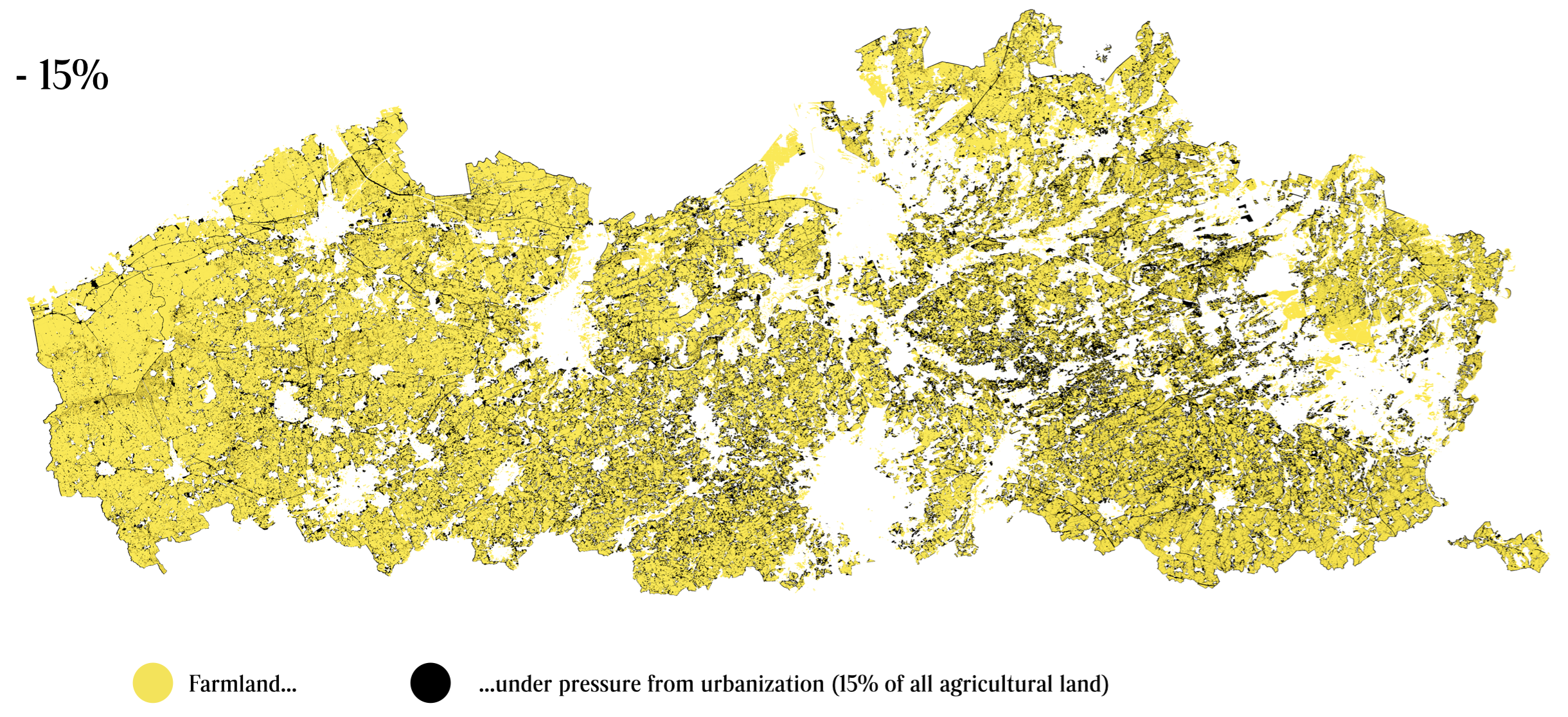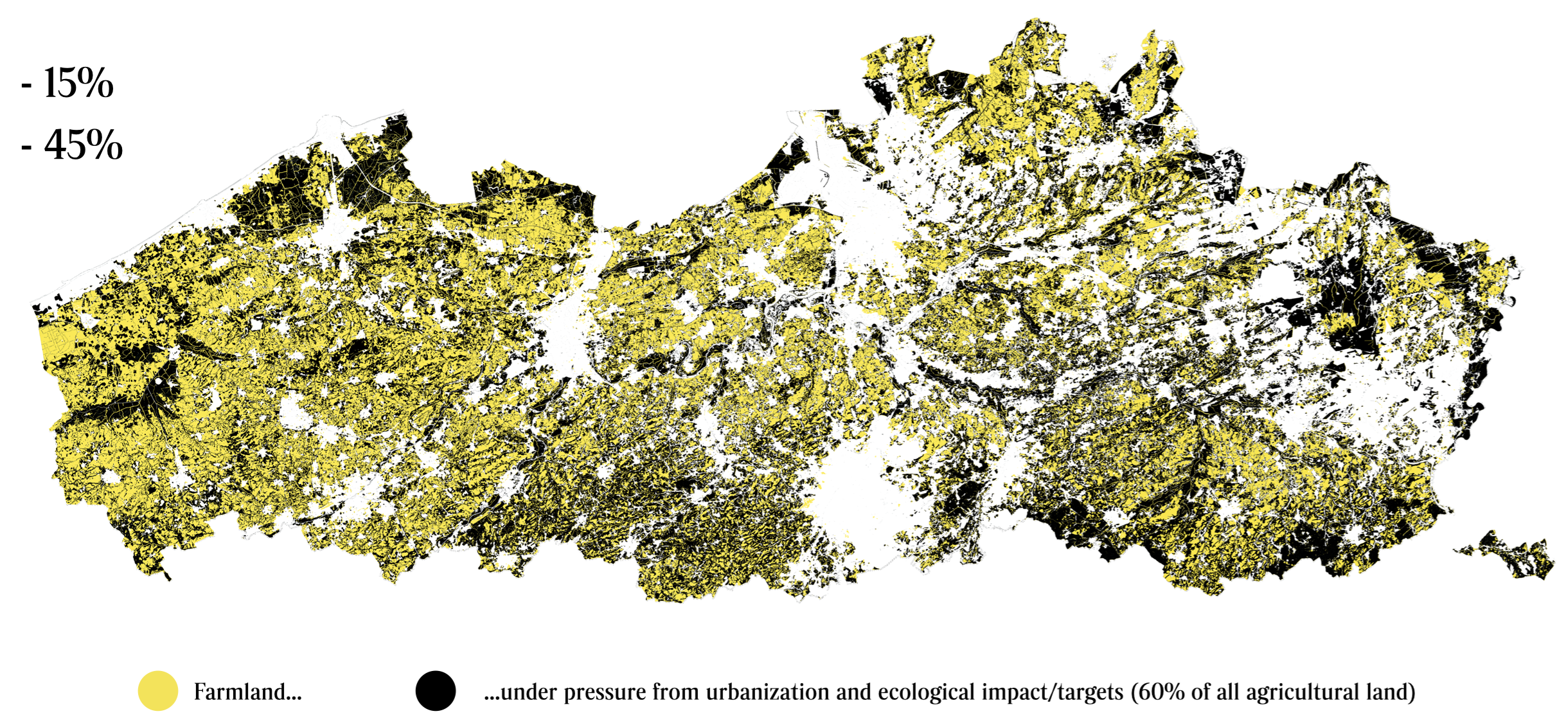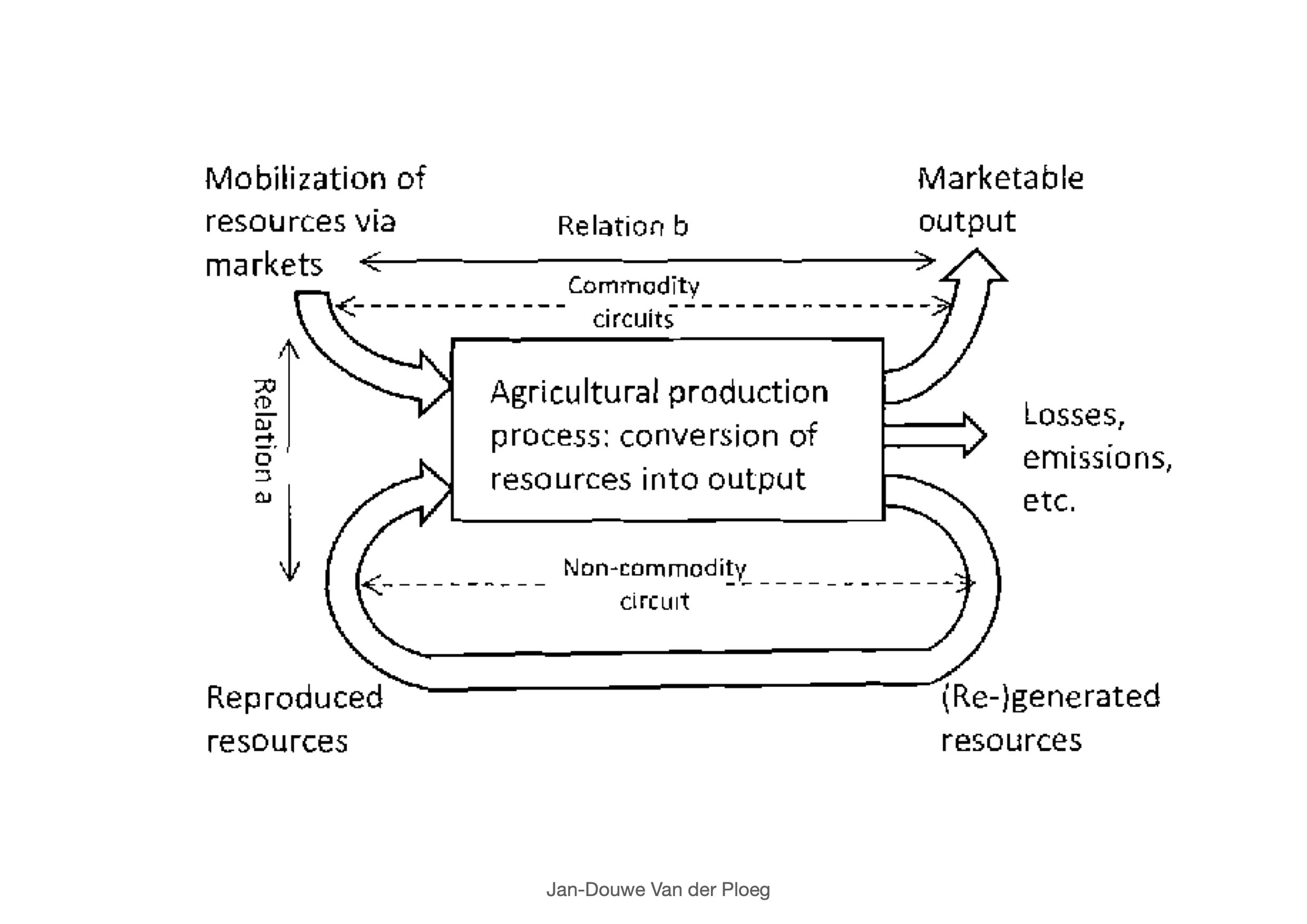The loss of farmland in the Brussels fringe is occurring at a dramatic pace, due to the pressure of residential development as well as a growing environmental and forestry agenda. Current strategies to reconcile agriculture and nature often start from a compensation logic – shifting the responsibility for nature management to farmers, resulting in even more pressure on the food production. As we have seen in the history of Brussels and elsewhere, more grounded agricultural practices navigated their business model on an equilibrum between forest (silva), pasture land (saltus) and the high-yield arable land (silva). What if we revalue this landscape approach into a contemporary farming strategy? What if we start from the perspective of the farmer's business model and connect it to a landscape strategy?
The agri-landscaper enables alliances for the cultivation of a landscape rather than one farmstead. Instead of being immediately blocked by the impossibility to organise a self-sufficient farm in this type of fragmented territory, agri-landscapers help out several farms to connect cultivation and flows of input and output into a broader landscape system. They thus allow farmers to break out of the lock-in, build new strategic alliances, networks and instruments to transcend not only the boundaries of one farm, but also the agricultural sector.

The agro-landscaper enables alliances for the cultivation of a landscape rather than one farmstead.
Land in a lock-in
From a land perspective, agriculture in and around Brussels seems to be a dead-end in terms of access to land. Not only is the land heavily fragmented due to decades of urbanisation. The land that is categorized as agriculture land is also severely under pressure and losing its food production function. This trend, identified as 'virtual farmland' has many causes. Firstly, there is an increasing demand for housing & residential development, especially due to the proximity to Brussels. For example, in the province of East-Flanders, up to 40% of vacant farmsteads have already been transformed to housing. Secondly, ecological development nature restoration and forestation play a considerable role. Where previously, looking from an economical perspective and development plus value, nature had to make space for agriculture, and agriculture had to make space for demographical growth, urbanisation and job opportunities. Today, we see a switch in order because of a growing ecological and climate agenda, locally but also on the European level. Agriculture is at the losing end. Residential pressure added up to ecological pressures due to climate change, both erosion, drought and flooding, announce a grim future for food production in the Belgian context, agroecological or not.
Current strategies often try to reconciliate agriculture and nature agendas through logics of compensation. Where there is a willingness to pay for delivered ecosystem services, this does not safeguard the food production function. On the contrary, sometimes it undermines the food production function, which is less profitable. This results in understandable Conversation Stoppers both for farmers and cities. What if we imagine the conciliation more from the business model of a farmer rather than from a compensation logic?

More than 15% of land zoned as agricultural is not used for food production, but for housekeeping, private gardens or other activities.

Adding up all the lands under pressure of nature goals and water management goals, we are at risk to lose two thirds of all agricultural land in Flanders in the next ten years if we do not change strategies.
New alliances
One of the basics of agroecology is the regeneration or locally harvesting of resources. How do you do that in this locked-in land? Historically, the boundaries of a farm were not as distinctively readable in the landscape as they are today: the entire territory was activated, shaped, cultivated or maintained for food production! We see this looking at The Harvesters by Pieter Bruegel The Elder – a fictional landscape though very much inspired on the Region of the Pajottenland in the Souht-West of Brussels. We can clearly distinguish three crucial elements in this agricultural landscape: the ager (arable land) on the hill, thriving thanks to the saltus (pasture land) in the valley, the cattle providing the needed nitrogen and the silva (forests) in between providing the carbon. How can we expect peri-urban agroecological farmers to close these loops today in such a fragmented landscape, where the scattered ownership and many claims force them to buy resources coming from elsewhere?
Still, new alliances seem to emerge that successfully start to build up these relations between ager, saltus and silva – leaning on new types of resource providers that are not depicted in Bruegel’s paintings. Take for example the Graannetwerk Pajottenland, an initiative of a local brewery with the ambition to reintroduce old varieties for their beer production. The brewery pays a coordinator to assist – on the field – a network of farmers in the introduction of specific local cereal in their crop rotation. An alliance between the buyer, the brewery guaranteeing remuneration regardless of the actual harvest, and the farmers, enabled to experiment and learn from each other. Another type of alliance is often between agroecological farmers and nature organisations, sharing machines or reducing nature maintenance costs through extensive grassland management – as farmer Kurt Sannen explains in the video.
Livestock farmer Kurt Sannen advocates for making a farm sufficiently profitable in economic terms so it can be taken over by anyone, not just a family member. Many farms are still too reliant on unpaid family labour, which leads to a fragile and unsustainable financial situation. A farm is, and always will be, a business. The search for how farming and nature can be mutually reinforcing is key to the model adopted by Het Bolhuis. For Kurt Sannen, agroecology and cooperation provide the keys to success.
Kurt collects vegetable waste from a chicory farmer and grass clippings from maintenance work at an orchard. His cattle and sheep graze in the Dassenaarde nature reserve. The nature farm occupies 120 hectares, 100 hectares of which are owned by Natuurpunt and the Agentschap voor Natuur en Bos. Het Bolhuis only breeds old, local cattle and sheep breeds, mainly Kempen cattle and Ardennes Foxheads. They are ideal grazers for managing and conserving natural meadows in harsh conditions. Sannen supplements the dry natural grass with grass-clover and alfalfa he grows himself. The business model is adapted to what the nature area has to offer. This approach enables Sannen to achieve a local feed autonomy. Het Bolhuis fulfils Natuurpunt’s ecological management needs in exchange for using the land. According to Kurt Sannen, who in his capacity as an independent consultant also provides advice to local authorities, farmers and port authorities, there are still insufficient trials in Flanders of this type of ‘multilayered’ landscape – a landscape characterised by the combination of several types of land use . Het Bolhuis demonstrates that nature management, climate adaptation, farming and even recreation can form a single, integral and profitable whole.

The scheme of Jan Dauwe Van Der Ploeg shows the cycles within a farm. How do we reorganize these loops in a fragmented landscape?

At Het Bolhuis the production of organic beef and lamb goes hand in hand with extensive grassland management. The connection between nature and agriculture focuses on biodiversity and preserving soil quality.
Landscape Observatory
Today, these successful alliances are few. These pioneers have emerged despite of the context today. On the level of land use, land ownership and on a juridical level, there are still many obstacles to make these new alliances or interdependencies structural, viable and common. From the entry point of preservation of land for agriculture, the Walloon government has started a land observatory. But could we also imagine a landscape observatory, scanning not only land ownership and land transactions, but also offer and demand of resources? And as such, facilitating these new alliances that transcend not only the boundaries of one farm, but also the agricultural sector?